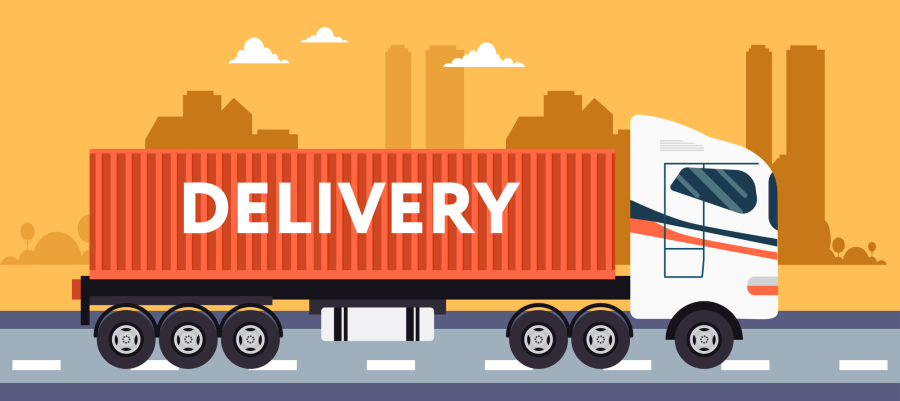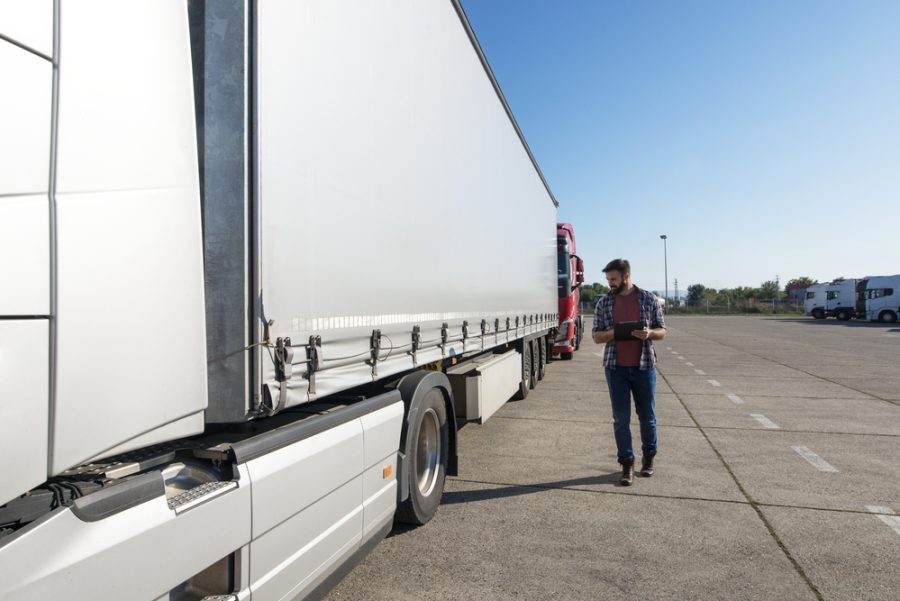What is OTR Trucking?
Over The Road (OTR) trucking, also known as long-haul trucking, is hauling freight over long distances, often in multiple states. This part of the trucking industry keeps the national economy moving by getting products from manufacturers to consumers. Understanding OTR trucking helps you appreciate the complexity and the big picture that keeps our supply chains running smoothly.
What is an OTR Driver?
Definition and Job
OTR driver, or Over The Road driver, is a professional truck driver who hauls freight over long distances, multiple states or regions. Their job is to deliver goods across those long hauls, and keep the supply chain moving.
OTR driver responsibilities
OTR drivers are responsible for driving safely, meeting delivery schedules, and following all transportation regulations. They manage long hours on the road, paperwork, and vehicle inspections, and communicate with dispatchers to keep the transportation process running smoothly and reliably.
OTR vs Local or Regional Drivers
OTR drivers haul long hauls, and local or regional drivers haul shorter distances, often within a specific geographic area. Local drivers are home daily, regional drivers are on the road for a few days at a time. OTR drivers are away from home for extended periods, covering bigger areas and the unique challenges of long-distance hauling.
OTR, Regional, Local Trucking
Local Truck Driving
Local drivers, or local truck drivers, operate within a specific area, often completing a route in a day. They load and unload goods, make multiple stops, and keep regular schedules. They drive smaller trucks than their OTR counterparts, city and suburban streets.
Local truck driving jobs are in delivery services, retail distribution, waste management, and construction supply. Examples are delivering groceries to supermarkets, hauling construction materials to sites, and delivering parcels for courier services. Local trucking jobs get you home daily, a better work-life balance. You get to know the routes and establish routines. But local trucking also has its challenges like navigating city streets, frequent stops, and tight delivery schedules.
Regional Trucking
Regional drivers operate within a specific area, several states but not as far as OTR trucking. Regional trucking is hauling goods within that defined area, a balance between local and long haul.
Regional and local trucking has shorter routes and drivers get home more often, sometimes daily or every few days. OTR trucking requires drivers to cover long distances and be on the road for extended periods, often weeks at a time. That’s a big difference in lifestyle and job demands for the drivers in each category.
Regional trucking gets you more predictable schedules and more time at home than OTR drivers. However, it still requires you to drive multiple routes and meet tight delivery schedules. Challenges are regional traffic patterns and strong time management skills to meet delivery deadlines within the area.
Over the Road Trucking
OTR is the backbone of the logistics industry, moving a wide variety of products from one part of the country to another. OTR requires drivers to be on the road for extended periods, driving different terrain and weather to deliver their loads on time.
The OTR life is unique, long hauls that keep them on the road for days or weeks at a time. They cover long distances, the freedom of the open road, and the challenge of managing their schedules and routes. Long haul trucking means living out of the truck, often being away from home for extended periods, and balancing the job with personal time.
OTR truck driving is different from local and regional trucking in many ways. Local drivers operate within a city or area and are home daily, regional drivers haul shorter distances within a specific region, OTR drivers haul across the country. OTR trucking requires a different skill set and lifestyle commitment, drivers must adapt to being away from home for extended periods and navigating nationwide routes.
OTR Truck Driver Life
Daily Routine and Challenges
The daily routine of an OTR truck driver is tough, starts early with a pre-trip inspection and goes on with long hours on the road. Drivers drive highways, navigate tight loading docks, and deal with various challenges like weather, traffic, and road construction. Each day requires constant time management and maneuvering in tight spaces. Despite all that OTR drivers stay focused on delivering safely and on time, using their experience, training, and problem-solving skills. Communication with dispatchers and customers is key to coordinating deliveries and resolving issues.
OTR trucking can affect personal life, drivers are away from home for extended periods. That means missing family events and home comforts. Balancing work and personal life is a challenge, drivers find ways to stay connected with loved ones while on the road.
Job Requirements and Skills
OTR truck driver requires a commercial driver’s license (CDL). CDL is a basic requirement for OTR drivers, proof they can operate a commercial vehicle safely and legally.
Experience is key, many companies look for drivers with several years of CDL experience. Additional certifications like hazmat training allow drivers to haul specialized and hazardous cargo.
OTR drivers need various skills, in managing specialized cargo like oversized loads or perishable goods. Driving the open road requires excellent driving skills, situational awareness, and the ability to adapt to changing conditions.
OTR Truck Driving Benefits
Pay
OTR truck driving offers good pay, often more than local or regional driving positions. OTR drivers average pay is competitive, many drivers earn more due to the longer distances and time on the road. OTR drivers earn more than local or regional drivers. This is because of the longer hauls and extended time away from home. The pay can be big for those willing to commit to OTR driving.
When comparing OTR to local and regional driving the pay difference is obvious. OTR drivers get paid more because of the demands of long-distance travel and time on the road. Local drivers have a more predictable schedule but lower pay. Regional drivers are in between and have a balance of pay and home time.
Career
OTR truck driving offers many opportunities for new drivers entering the industry. Many companies are looking to hire new talent for OTR positions, lots of room for growth and experience. Staying with the same company as an OTR driver can lead to long-term benefits. Loyal drivers get pay increases, better routes, and a sense of job security. Building a career with one company also opens up opportunities to move into dispatching, training, or management.
OTR truck drivers get to haul various types of freight and routes, keep the job interesting and challenging, and new experiences and skills to develop. Trucking jobs especially OTR positions have strong job security because of the constant demand for goods transportation, there will always be a need for skilled drivers. Despite economic changes, the trucking industry is steady, with constant employment opportunities.
Challenges and Considerations
Time Away
OTR truck drivers are away from home for several weeks, crossing state lines and experiencing different regions. This extended time on the road can affect personal and family life, drivers need to adjust and find a balance between work and home. Adjusting to life on the road for long periods can be tough. Drivers need to adapt to a mobile lifestyle, manage their time, and create routines that make life on the road comfortable and sustainable.
Physical and Mental Demands
Long-distance driving has physical demands, staying alert for long periods and being behind the wheel physically. Drivers need to stay fit and take breaks to stretch and rest. The mental challenges of being on the road include loneliness, stress, and fatigue. Drivers need to develop coping strategies, stay connected with loved ones, have time for hobbies, and positive mindset.
Health and Safety
Health and wellness on the road are important for OTR truck drivers. Eating healthy, exercising, and getting enough sleep are the keys to being in shape and performing well on the job. Safety is number one for OTR truck drivers. This includes following traffic laws, maintaining a safe distance, and being aware of road conditions and weather changes. Regular vehicle maintenance and being informed of safety protocols are also part of the job.
Conclusion
OTR truck driving is different from local and regional driving by covering more miles and being away from home for extended periods which affects personal life. Despite the physical and mental demands, health and safety, and adjusting to life on the road for long periods, the pay and career opportunities make OTR trucking attractive. OTR drivers get higher pay, haul various types of freight, and have job security in the trucking industry.
For new drivers, OTR trucking offers a rewarding career with diverse routes, skill development, and steady employment. The industry is critical in moving loads across the country that support the national economy, OTR drivers are the backbone of the supply chain. Choosing a career in OTR trucking not only gives financial rewards but also keeps goods moving across the nation.






